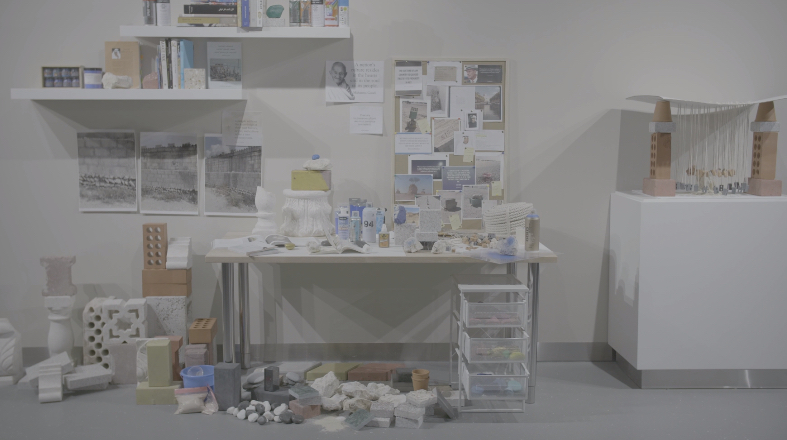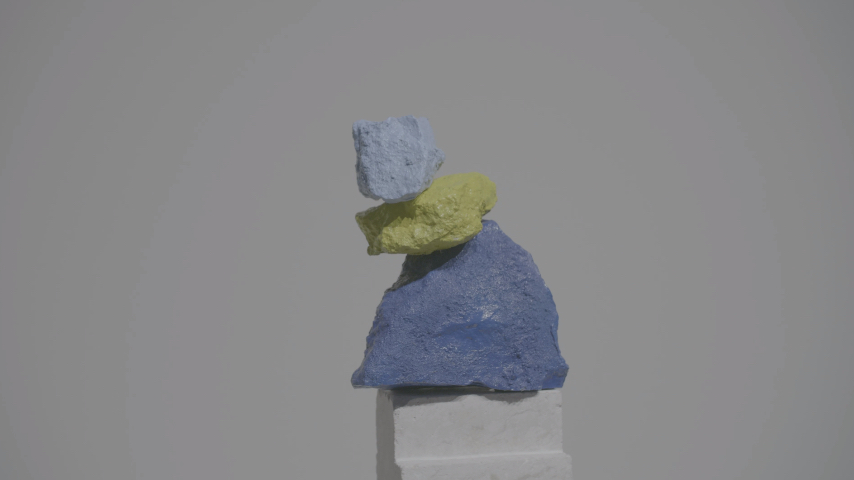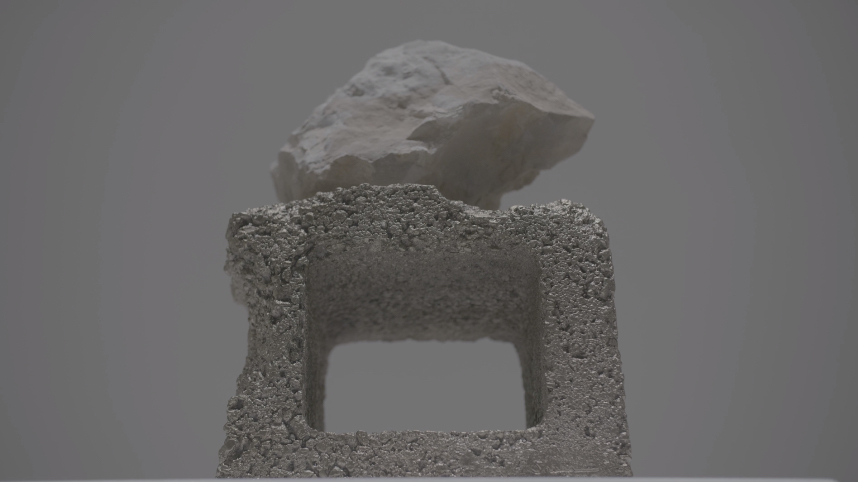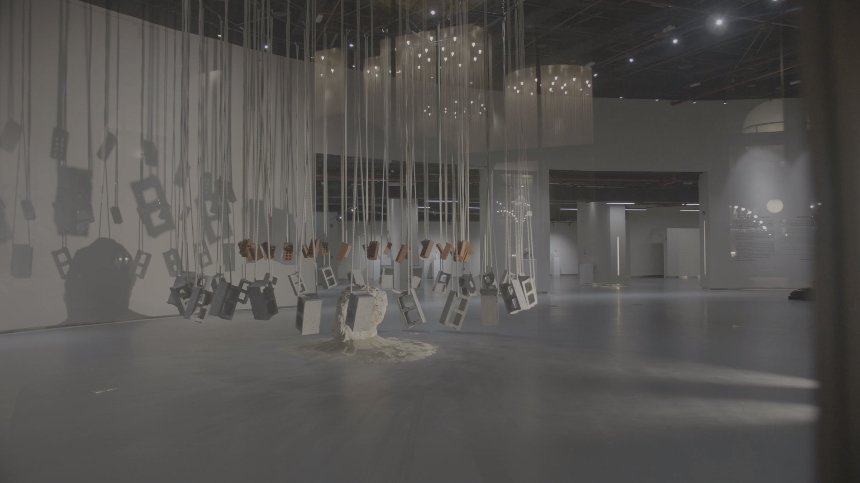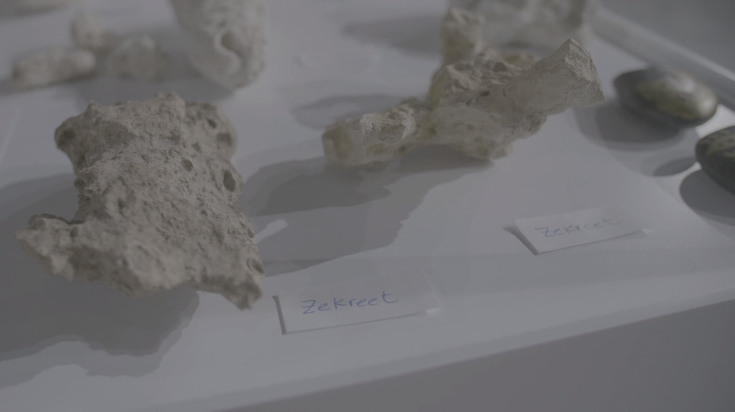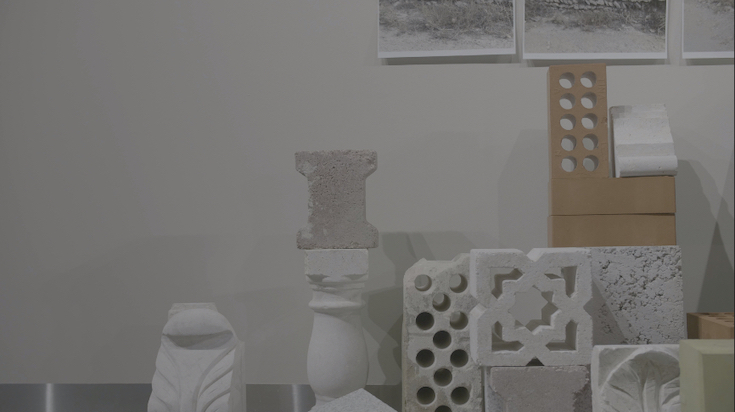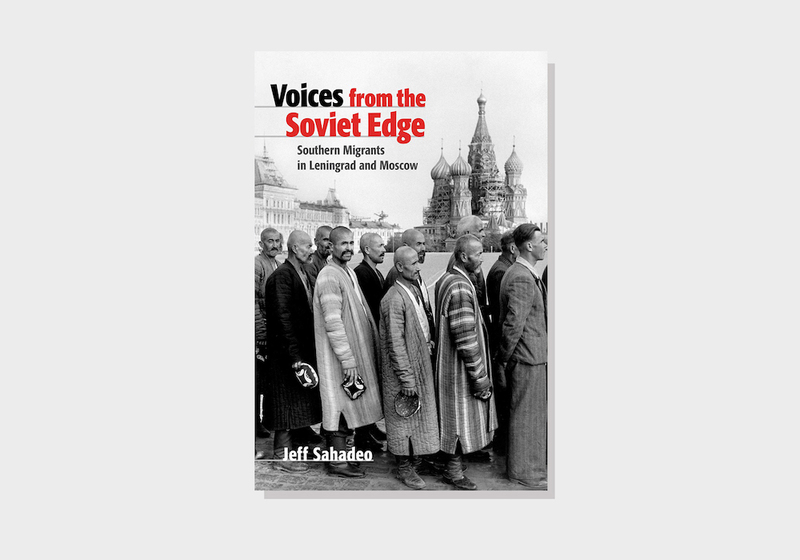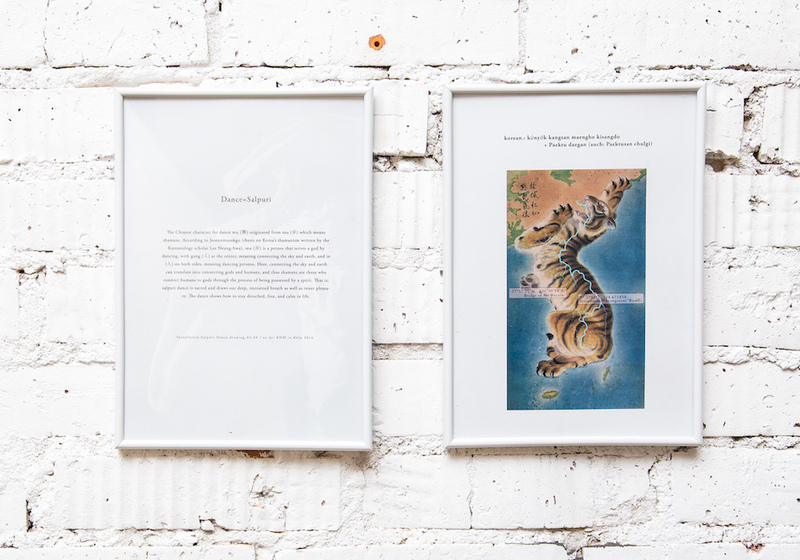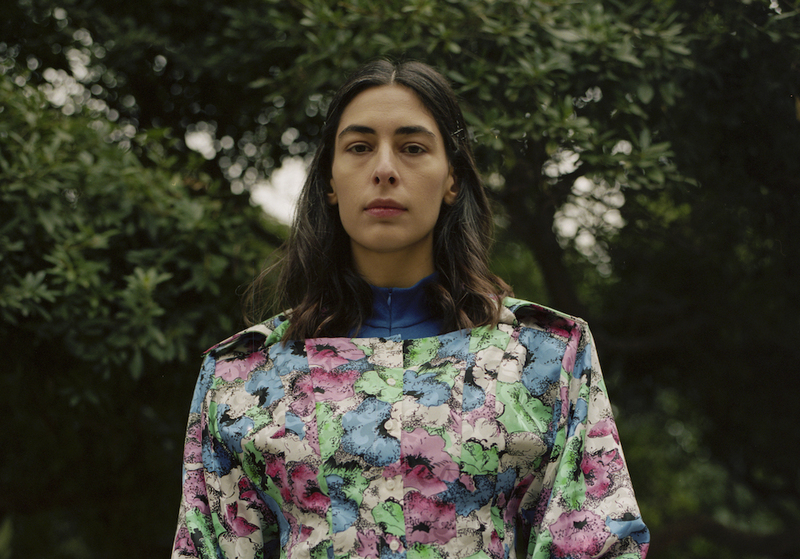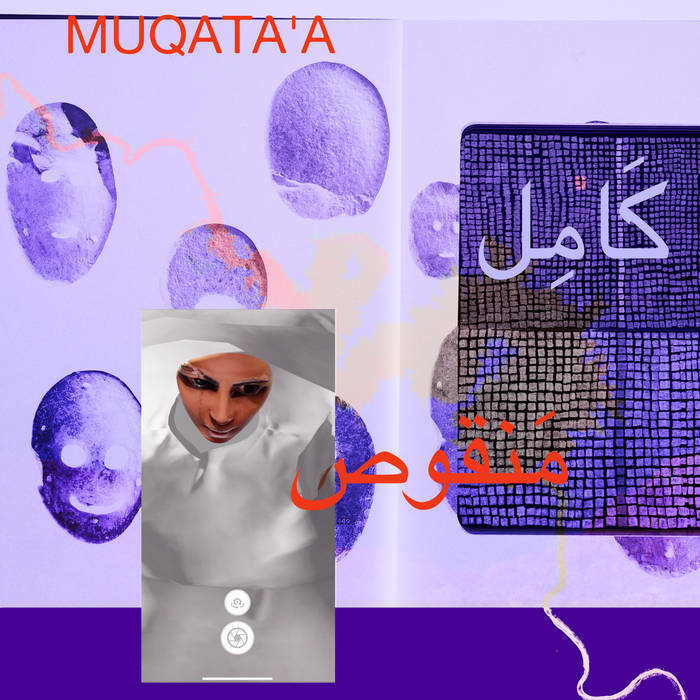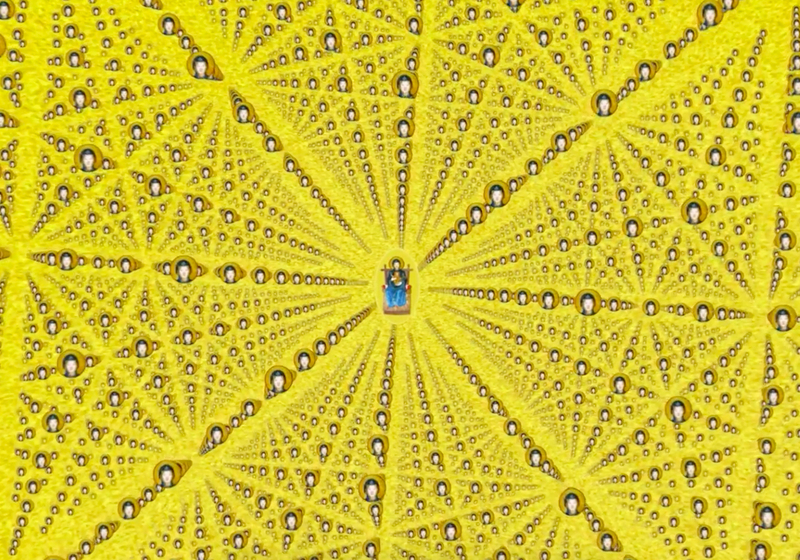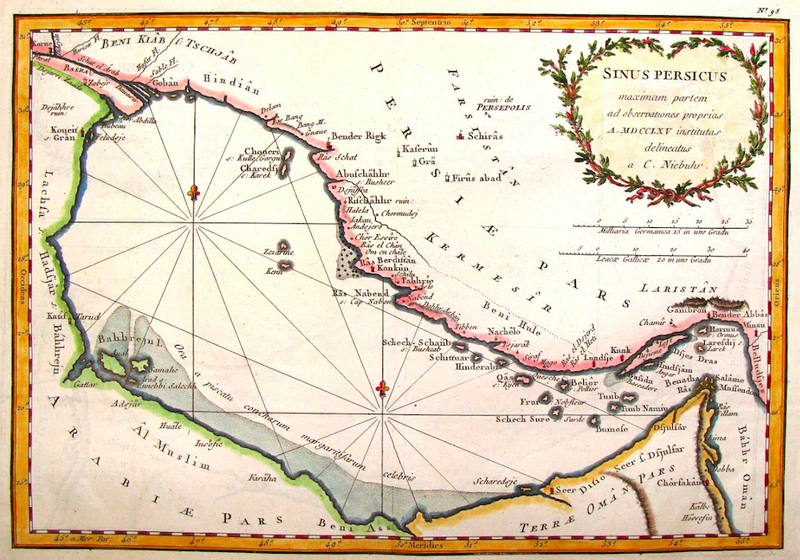Shua’a Ali Al Muftah is a Qatari artist whose practice explores relationships between human creativity and identity as well as the representation of cultural heritage in art. In this short interview, she spoke about her latest exhibition Rocks and Bricks — A Crossroad, in which installations assembled from found natural and artificial objects become metaphors for balance, a crucial concept for Qatari traditional and contemporary contexts.
I developed the idea of Rocks and Bricks — A Crossroad conceptually on reflections of how art is connected to our roots, identity, and cultural practices. In Qatar nowadays the most obvious representation of our heritage is in architecture, especially in the most recent buildings: museums, the Ministry of Interior, and other new, state of the art developments. Using local sources and buildings for inspiration, I feel like it’s important to maintain and to continue such practices so that we don’t lose our identity and a degree of authenticity. I lived abroad for twenty two years and I came back here in 1997—Doha started changing really quickly since then. When you are living abroad you miss your own tradition a lot, but when you come back you realize that you are connected to it in some way, even though you have been distanced from it for a long time. In this project I’ve tried to present my findings in our environment in an abstracted contemporary manner.
The main installation forms two circles and represents the two decades of on-going and accelerating fast-paced construction in our country. The stone and the sand represent the old structures that were built with these simple materials and mixed with some gypsum powder, but it also symbolizes the tradition, the roots, and the culture, everything that gives us our identity. I used ropes, because of their significant importance: they were used in the building process, at the seaside by the pearl divers, with the boats, and in the desert where people built their tents. It’s an important tool which I have intertwined into the elements to portray how we can bond and connect our past with our present to create this contemporary moment that is particular to us in Qatar, in Doha. I’m not troubled by the acceleration of construction work, since there are always countless benefits to it, but because of the fast-paced changes lots of things are being lost without us noticing it or noticing them later, maybe when those things have diminished gradually. Qatar has a relatively small population, that’s why a large portion of the population will be affected by change more rapidly than other countries. There are houses in MsheirebMsheireb Msheireb is one of the oldest Doha neignborhoods. that are kept quite the same, which is very essential to our culture and its continuity. One of them, Radwani house, is an old house where one of the Qatari families lived, which is a small museum now.
I started to make rock stacks with stones and debris less than three years ago. I was on vacation and with my daughter we started playing with stones on the beach, seeing how things stack on top of each other was interesting to me. I brought some back home with me and added some more elements from the local environment, and even started adding construction debris. Every step you take may help you to find something that is left over from some kind of construction site. Eventually, I started experimenting with different materials that surround us. The collection’s equilibrium is based on balance and synergy, where contrasting materials are mixed together as a depiction of our contemporary moment, but at the same time the exhibition is inspired by the rock stacks that people used a long time ago to mark a location in the desert as a location pin, where some rocks were placed to indicate directions. We can call it a cultural way of marking location, just in a primitive or simplified way, which is perhaps common all around the world. I also took photos with examples of rock stacks around Qatar. They used surrounding objects that people traditionally used in the deserts to mark a specific location.
I researched the method that people used a long time ago to mark a certain area, location, or boundary and I’ve found out that these practices are diminishing now due to the expansion of the city. They used to be closer to Doha, but as constructions, roads, and cities are getting bigger, these rock stacks are only common farther away from the city and in open areas. In my works I mostly use colors that are related to our environment and landscape and represent the golden sand, the sun, and different shades of blue colors, since Qatar is surrounded by lots of water. The equilibrium series in this exhibition is more aesthetic as I juxtapose different elements that are organic and geometric, which for me personally look balanced and contrasting.
The balance in my work is also related to our daily lives and practices and how we can balance our culture and traditions with modernity. I’ve related to our everyday experience. That’s why in every sculpture there is an old rock, to highlight the importance of our past that is always part of us. We are going to carry it with us wherever we go and pass it to the new generations.
I’ve been painting for almost eight years now and I have participated in a few exhibitions with my paintings. This is the first time that a gallery approaches me to set up an exhibition with the stone works. I used this chance to interpret the heritage in my own contemporary way. The art scene in Doha has become very vibrant, compared to ten or fifteen years ago, when paintings and photography were the most popular. There is more acceptance for different forms of art, especially with the support from Doha Fire Station and Qatar Museums. Also, the presence of Virginia Commonwealth University in Qatar foundation and it’s graduates have diversified artistic practices in Doha immensely.
